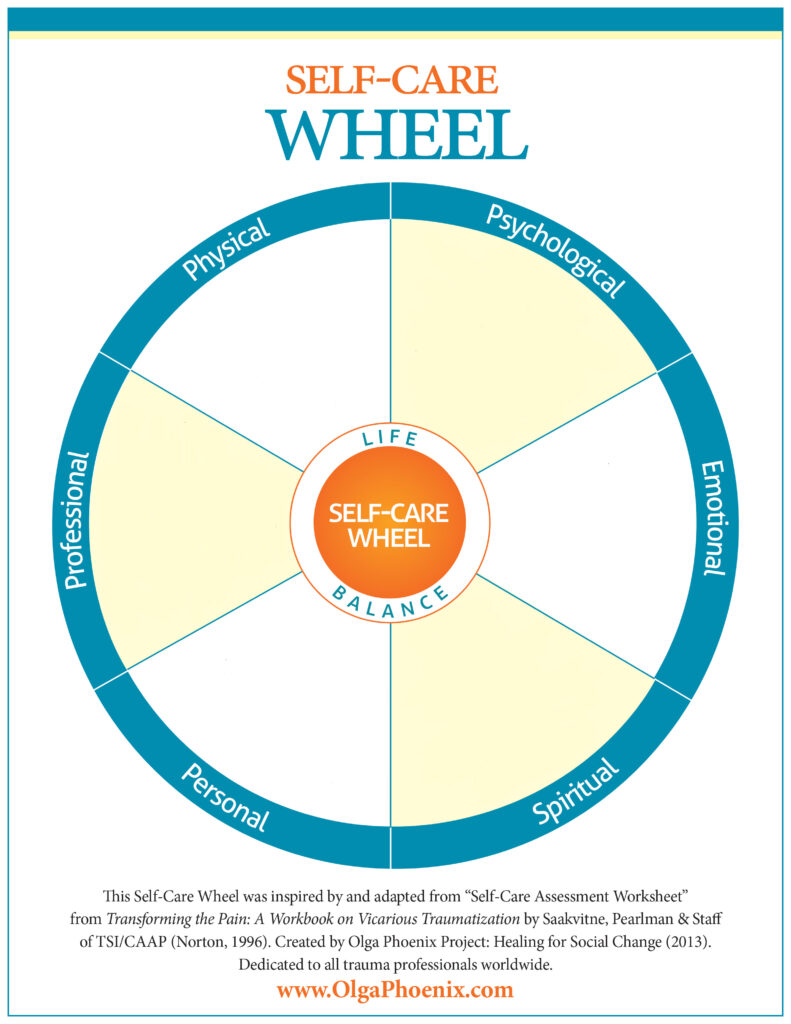Using a Self-Care Wheel
Skyland Trail Director of Adjunctive Services, Shelley Danser, CTRS, recently presented on using a self-care wheel to our Family STEP program. Have you ever tried using a self-care wheel?
Using a Self-Care Wheel to Build a Balanced Life
Life can feel like a juggling act—work, relationships, health, and personal growth all competing for our attention. The self-care wheel is a simple yet powerful tool to help you find balance by visualizing and strengthening the different areas of your well-being.
What Is a Self-Care Wheel?
A self-care wheel maps out the key “pillars” of wellness, encouraging you to reflect on how you nurture each area. These often include physical, emotional, social, spiritual, professional, psychological, and personal/intellectual wellness. By regularly assessing each pillar, you can identify which areas need more attention and create a personalized plan for improvement.

Why It Works
The self-care wheel helps you see the big picture. Self-care isn’t just about bubble baths or gym time—it’s a holistic practice that supports your mental, physical, and emotional health. When all pillars are tended to, you’re better equipped to manage stress, maintain energy, and pursue your goals. Neglecting one area for too long, however, can lead to burnout, compassion fatigue, or even physical illness.
How to Use the Self-Care Wheel
- Assess Your Current Balance – Ask yourself: How much time and energy am I giving to each pillar? Which areas feel strong, and which are undernourished?
- Set Small, Specific Goals – For example, if the social pillar feels neglected, you might plan one weekly coffee date or reconnect with a long-distance friend.
- Schedule Self-Care Intentionally – Treat these activities as non-negotiable appointments with yourself.
- Track Your Progress – Revisit the wheel every month or quarter to see where you’ve grown and where you still want to improve.
Practical Ideas for Each Pillar
- Physical: Get consistent sleep, move your body daily, and stay hydrated.
- Emotional: Practice gratitude, journal your feelings, or talk with a therapist.
- Social: Join a club, volunteer, or simply reach out to friends.
- Spiritual: Reflect on your values, meditate, or spend time in nature.
- Professional: Take breaks, set boundaries, and match your work with your passions.
- Psychological: Challenge negative thinking and practice mindfulness.
- Personal/Intellectual: Learn a new skill, read regularly, or explore creative hobbies.
Removing Barriers
Time, money, and guilt are common obstacles to self-care. Remember: small, consistent actions matter more than occasional big efforts. Even five minutes of mindful breathing, stretching, or journaling can make a difference.
The Takeaway
The self-care wheel is not a rigid prescription—it’s a guide to help you live more intentionally. By investing in all areas of wellness, you create a strong foundation for health, resilience, and personal fulfillment.
